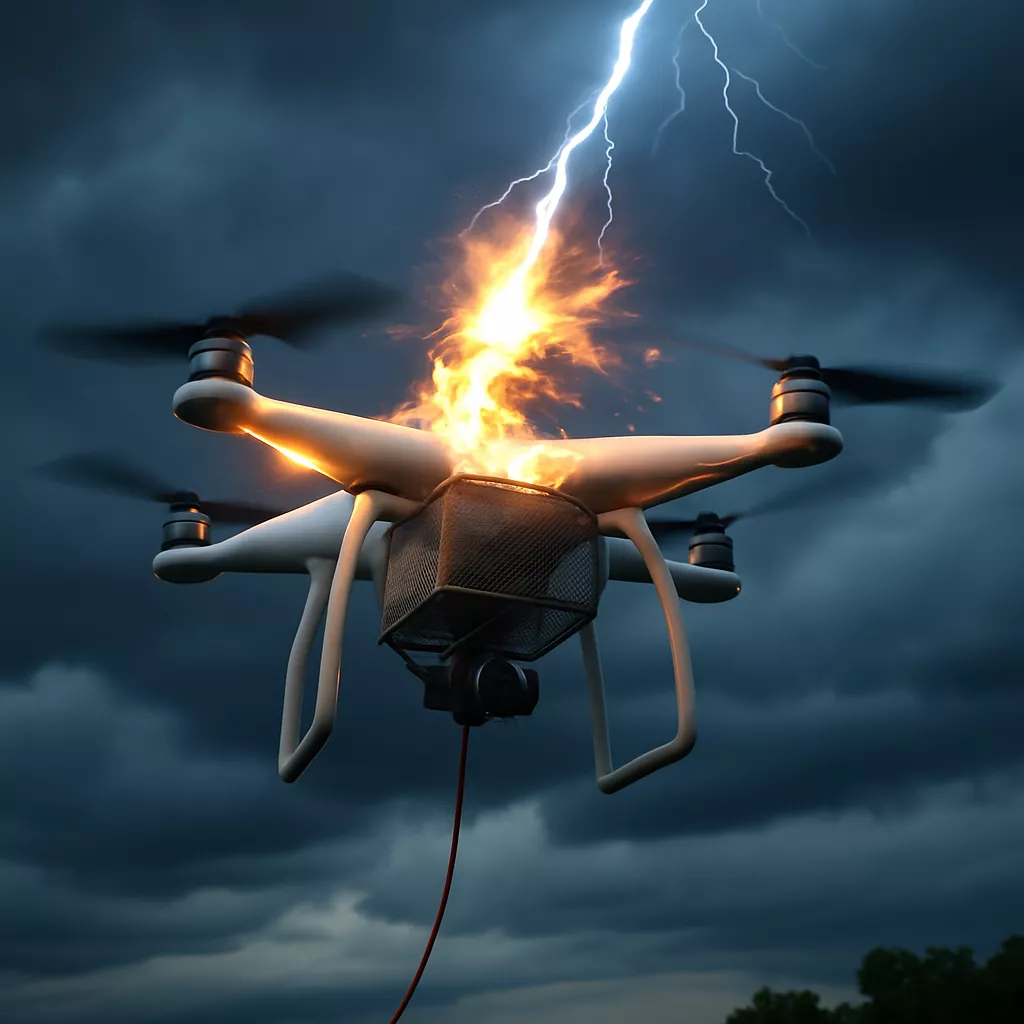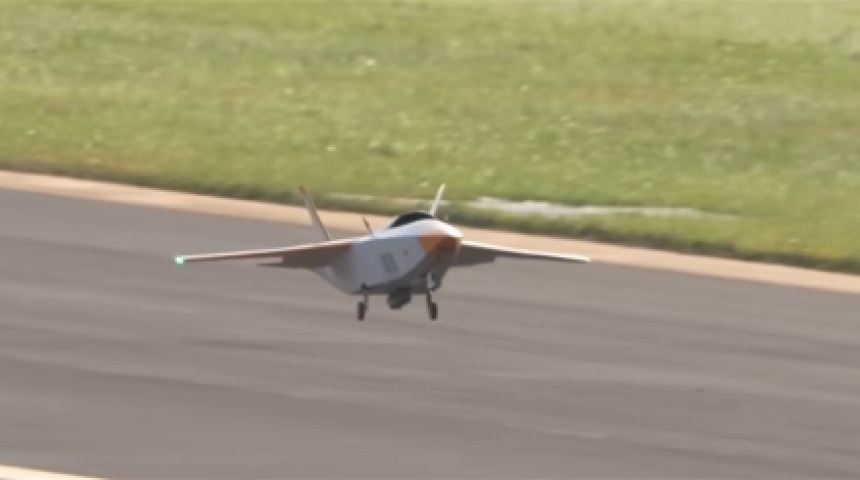《無人機新革命》日本NTT首創閃電引導技術登場!

雷擊一直是威脅公共安全與基礎建設的重要自然災害,但如今,來自日本的科技突破有望改寫這一局面。日本電信電話公司(NTT)近日宣布,成功研發全球首款能主動引導閃電的無人機系統。
Lightning has long posed a major threat to public safety and infrastructure, but a recent technological breakthrough from Japan could change everything. Nippon Telegraph and Telephone Corporation (NTT) has announced the world’s first successful development of a drone system capable of actively triggering and guiding lightning strikes.
NTT指出,新開發的無人機利用電場強度變化,主動誘發閃電,並且能將雷電引導至遠離人群與建築的安全地帶。這項創新技術,未來可望大幅減少雷擊帶來的財產與人身損害,對提升城市公共安全意義重大。
NTT explained that their newly developed drone leverages variations in electric field intensity to actively trigger lightning and guide it away from populated areas and structures. This innovation could significantly reduce lightning-related damages and boost urban public safety.
該無人機特別搭載防雷籠(Faraday cage)與引導電線裝置,即便直接遭受雷擊,也能保持穩定飛行。據統計,僅在日本,每年雷擊造成的經濟損失就高達1,000億至2,000億日圓(約7億至14億美元)。
Equipped with a Faraday cage and a current-guiding wire system, the drone is capable of remaining operational even after a direct lightning strike. In Japan alone, lightning-related damages are estimated to cost between ¥100 billion and ¥200 billion (approximately $700 million to $1.4 billion) annually.
在去年12月至今年1月,NTT於島根縣海拔900公尺的山區進行了實驗。研究人員利用電場強度計(field mill)監測地面電場變化,並在雷雨雲接近、電場升高時,派出無人機攜帶電線升空,引導閃電擊中指定地點。
From December 2024 to January 2025, NTT conducted experiments in the mountainous areas of Shimane Prefecture at an altitude of 900 meters. Using a field mill to monitor changes in ground electric fields, researchers deployed drones equipped with wires when storm clouds approached, successfully guiding lightning strikes to controlled locations.
2024年12月13日,隨著地面電場強度急速升高,無人機升至300公尺高空並與地面通電。實驗中,電線與地面間出現超過2,000伏特的電位差,引發了有史以來首宗由無人機成功誘導的閃電。
On December 13, 2024, as the ground electric field rapidly intensified, the drone ascended to 300 meters and established an electrical connection with the ground. This setup generated a voltage difference of over 2,000 volts, successfully triggering the first-ever lightning strike initiated by a drone.
閃電擊中瞬間,現場出現劇烈爆裂聲與強烈閃光,雖然無人機的防雷籠出現部分熔損,但整體系統依然能維持飛行,證明了該技術的可靠性。
At the moment of the strike, a loud explosive sound and a bright flash were observed. Although the Faraday cage partially melted, the drone remained stable, proving the reliability of the system.
NTT進一步指出,單靠無人機飛行於雷雨雲下,並不足以吸引閃電。真正關鍵在於主動觸發技術以及即使遭受雷擊後仍能持續運作的能力。這背後仰賴了防雷籠設計與精密引流電線的雙重保護。
NTT emphasized that merely flying under storm clouds isn’t enough to attract lightning. The real breakthrough lies in active triggering capabilities and maintaining functionality post-strike, made possible through the combination of the Faraday cage and the specialized current-guiding wire system.
在後續人工雷擊測試中,這套系統更承受住高達150千安培的雷擊電流,比自然雷擊平均電流高出五倍以上,且無損無人機核心性能,能應對絕大多數自然環境下的雷擊情境。
Subsequent artificial lightning tests showed that the system could withstand currents up to 150 kA—five times stronger than typical natural lightning—without compromising the drone’s core functionalities, ensuring readiness for real-world scenarios.
未來,NTT除持續優化閃電位置預測技術與閃電機制研究外,還計劃挑戰一個更大目標——開發技術來捕捉並儲存閃電能量,為未來能源應用打開全新可能性。
Looking ahead, NTT aims not only to improve lightning strike prediction and better understand lightning mechanisms but also to explore the ambitious goal of capturing and storing lightning energy, opening new frontiers in renewable energy applications.




回應文章建議規則: